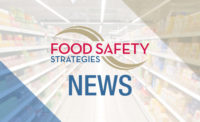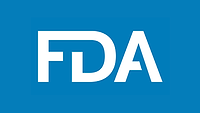FDA’s New Era of Smarter Food Safety

Today, the U.S. Food and Drug Administration (FDA) announced a “New Era of Smarter Food Safety” that will combine the implementation of the Food Safety Modernization Act (FSMA) with the agency’s use of new and emerging technologies.
FDA’s new effort will start with the development of a “Blueprint for a New Era of Smarter Food Safety,” that will address the areas outlined below. These initiatives are quoted directly from FDA's press release.
Food Traceability
While we have new tools that can more rapidly identify what foods may be causing illnesses, we know that food safety is a never-ending race to detect and respond to problems, while continually assessing better ways to prevent them. When it comes to food traceability, many in the food system utilize a largely paper-based system of taking one step forward to identify where the food has gone and one step back to identify the source. When you look at how other industries digitally track the movement of planes, ride sharing and delivery of packaged goods, it becomes clear that we must explore how these types of technologies could improve tracking when it comes to food.The use of new and evolving digital technologies may play a pivotal role in tracing the origin of a contaminated food to its source in minutes, or even seconds, instead of days or weeks, when contamination does occur. Access to information during an outbreak about the origin of contaminated food will help us conduct more timely root cause analysis and apply these learnings to prevent future incidents from happening in the first place. To help accomplish this goal, our new era of smarter food safety work will explore opportunities and specific actions to evaluate new technologies and upgrade our abilities to rapidly track and trace food through the supply chain. This work will support and be aligned with other track and trace efforts at the agency, such as our recently announced pilot programs focused on tracking the movement of medicines throughout the supply chain as part of the Drug Supply Chain Security Act.
Digital Technologies
Tracing is only one area where technology can enhance food safety. We’ll also be looking at how to leverage emerging technologies and other approaches that are being used in society and business sectors all around us, such as distributed ledgers, sensors, the Internet of Things and artificial intelligence. We will assess how these technologies could create a more digital, transparent and safer food system while also addressing consumer demands for quick access to information about where their foods come from, how they’re produced and, if the food is the subject of an ongoing recall.To this end, today we’re sharing that the FDA plans to conduct a new pilot that will leverage artificial intelligence and machine learning to explore new ways to enhance the agency’s review of imported foods at ports of entry to ensure they meet U.S. food safety standards. The number of import food lines is increasing year after year and applying the best predictive and analytical tools will help ensure we’re targeting the greatest risks to protect consumers. This pilot will build upon FDA initiatives already under way, which are also looking at how use of these new technologies may be able to help us continue meeting our public health mission.
Evolving Food Business Models
With the rise in e-commerce of food, the way we get our food from farm to home continues to evolve. As customers are increasingly asking for food to be delivered to their homes, there are new methods, packaging materials, temperature control approaches and nodes (such as “last mile” delivery in cars and bikes) in the e-commerce food delivery system. These evolving business models present food safety challenges as well as novel considerations around regulatory framework and oversight at the federal, state and local level. Our Blueprint will discuss areas for collaboration in this space as we work to identify the appropriate standard of care in this rapidly growing sector.
FDA will be holding a public meeting later this year to discuss smarter food safety, seek stakeholder input, and share ideas on the agency’s overall strategy and the specific initiatives.
Looking for a reprint of this article?
From high-res PDFs to custom plaques, order your copy today!





